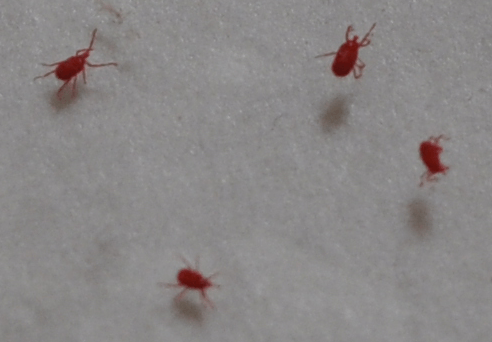-- Pest Library --
Clover Mite
Clover Mite Description
The adults are reddish brown to a dark green-brown color. They are eight-legged, but it is their front pair of legs that makes them distinctive from other mites. The front legs are twice the size of the others and are extended forward near the head.
Diet
Clover mites are not blood feeders, but feed on plants getting their nutrition from sucking plant juices from grasses, clover and other plants common to lawns. Clover mites can become a nuisance in multi-story buildings since they can live on rooftops and patios where mold or mildew provide sources of food.
Life Cycle & Reproduction
Clover mite populations may become large since females can lay up to 70 eggs and each becomes a mature adult in 30 days or less under suitable circumstances. Clover mites reproduce by parthenogenesis, which means the females are able to reproduce without being fertilized by the males.
Habitat
Clover mites can be especially abundant in heavily fertilized lawns, but have many hosts plants including many different lawn grasses, ornamental flowers, clover, dandelion, shepherd's purse, strawberry, daffodil, salvia, alyssum, and primrose, to name only a few.
Threat
They don't pose much of a threat to human beings or pets. The only things that are in danger when clover mites are around are your belongings. Since clover mites are so small, it's possible you may not even recognize them in your house until they spread. What you're more apt to notice are the red stains they leave behind.










